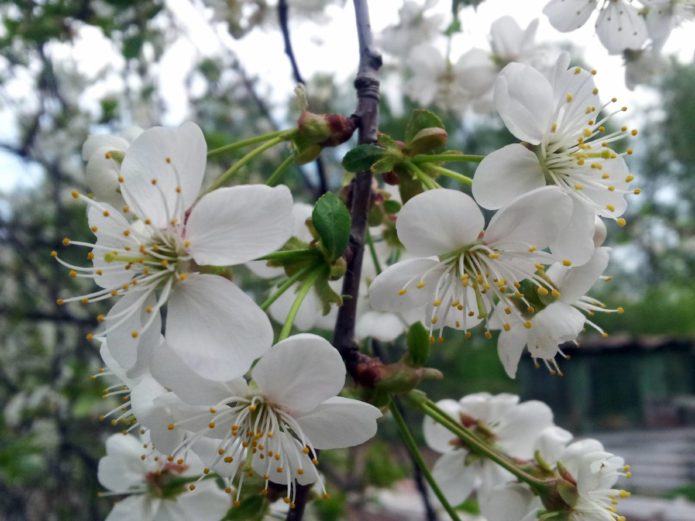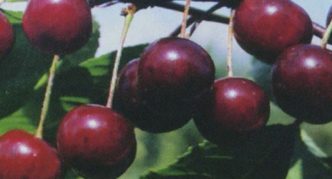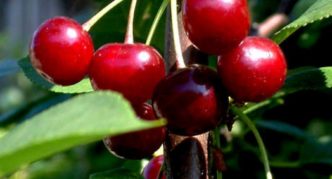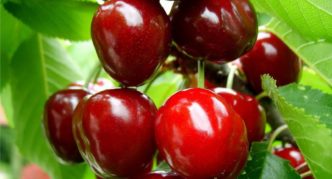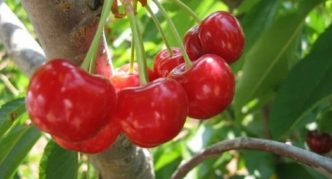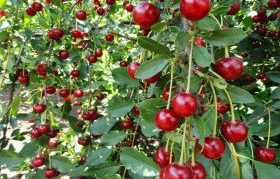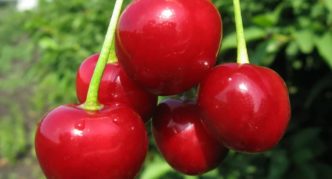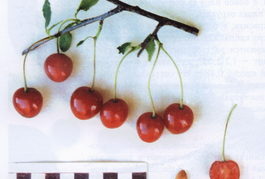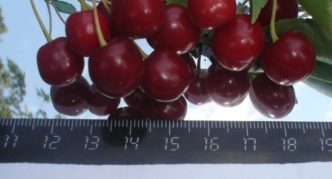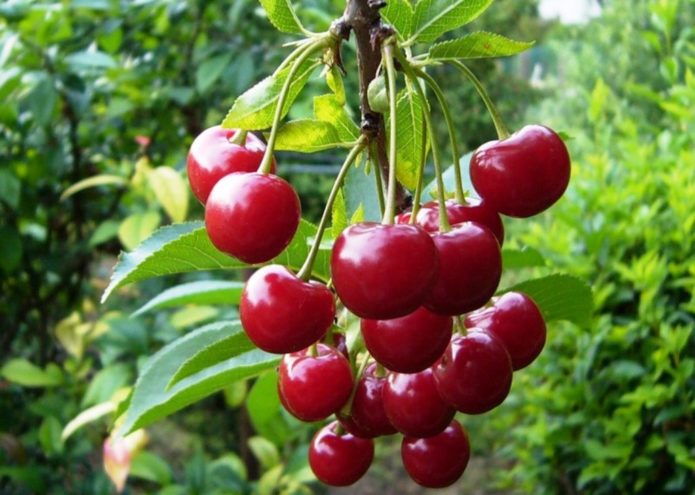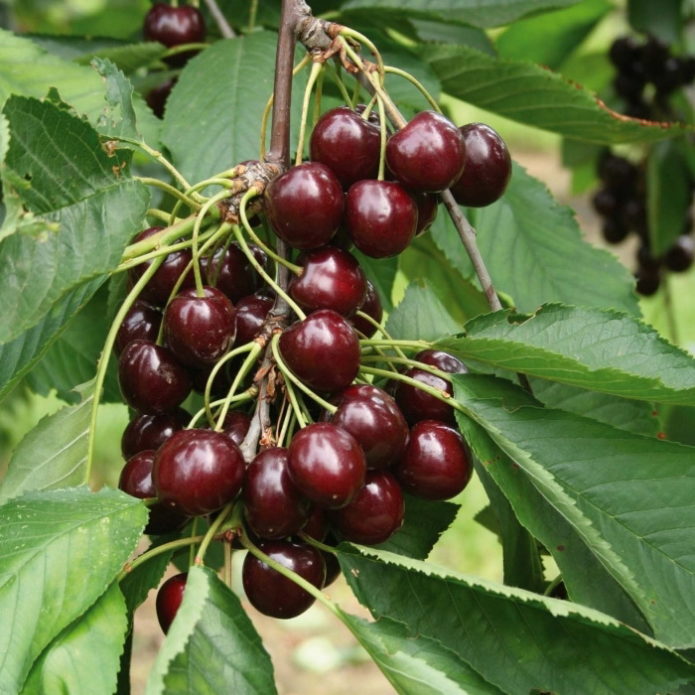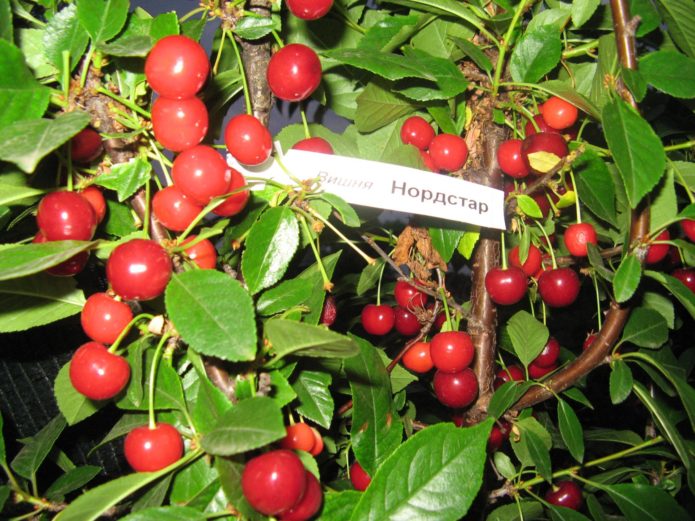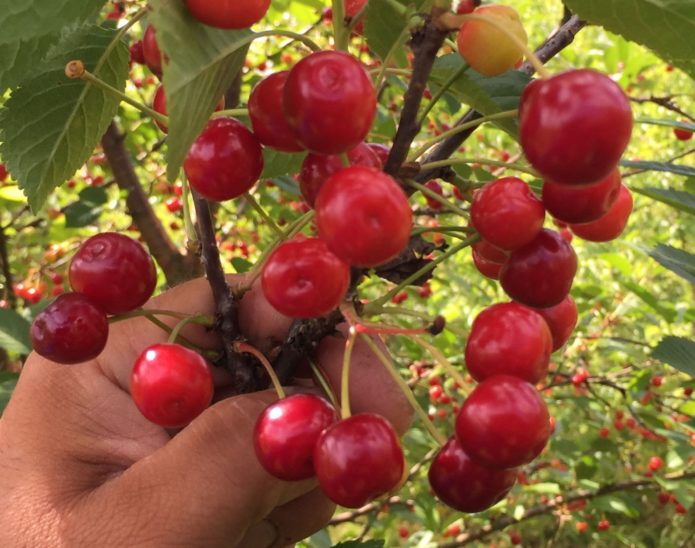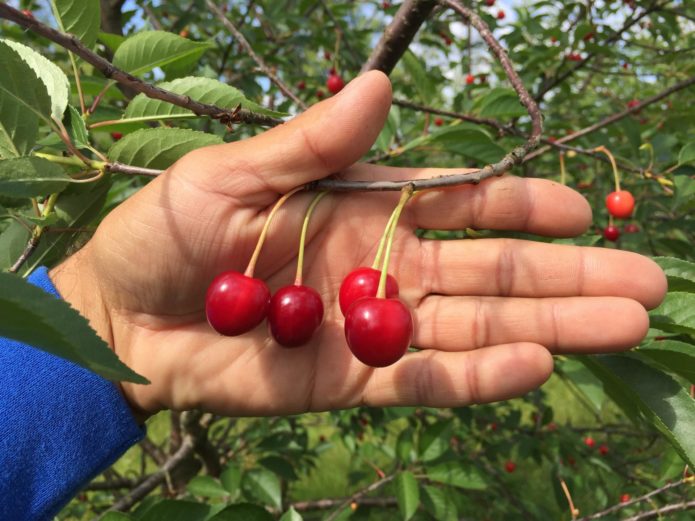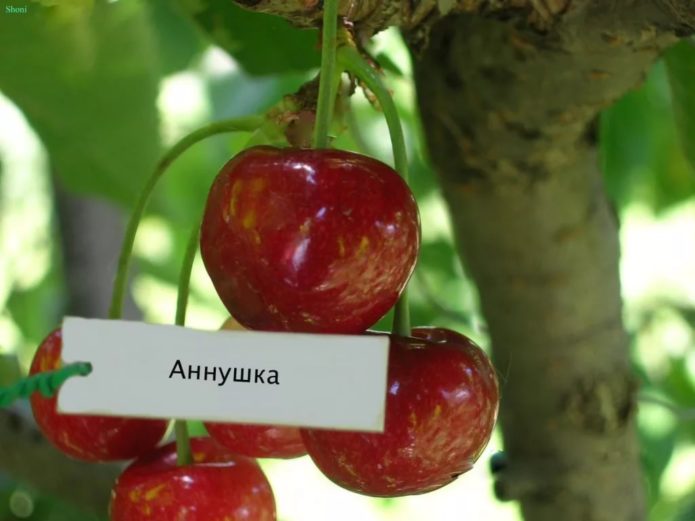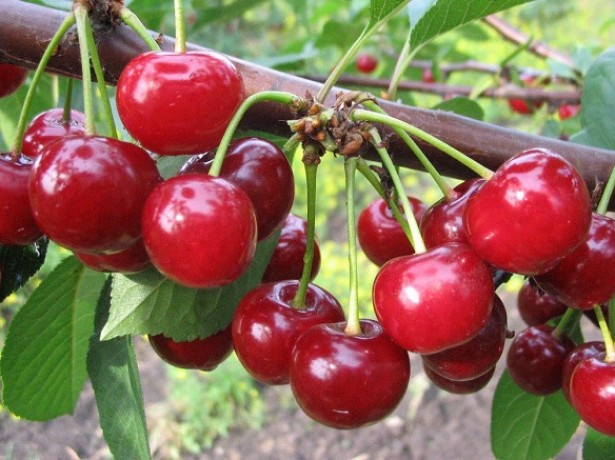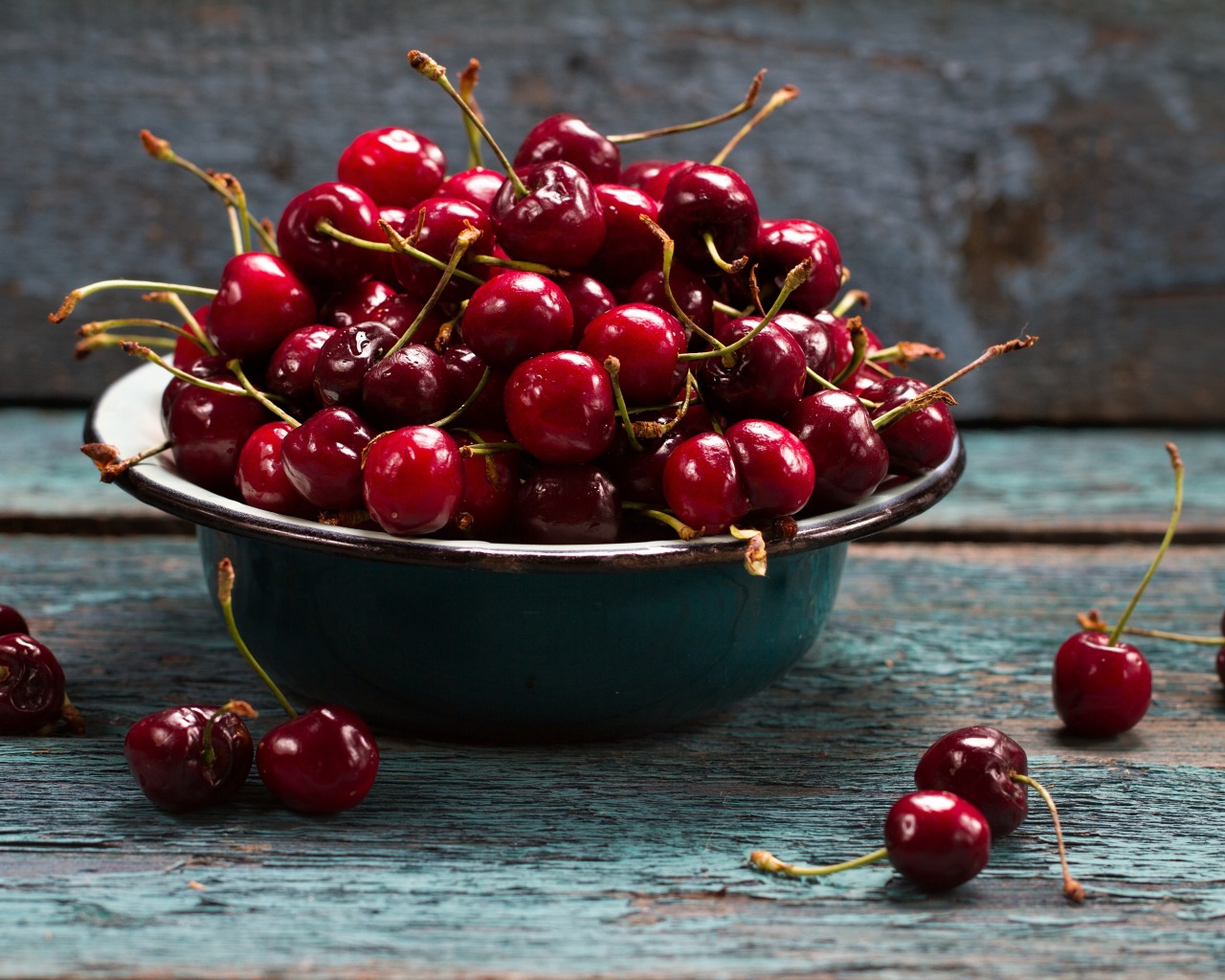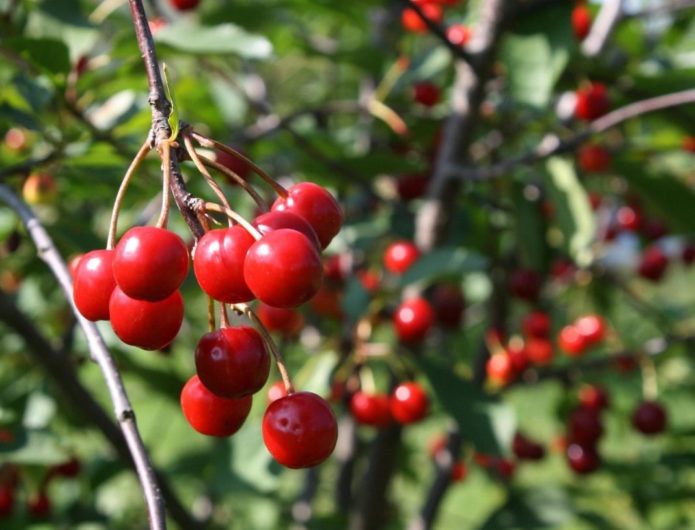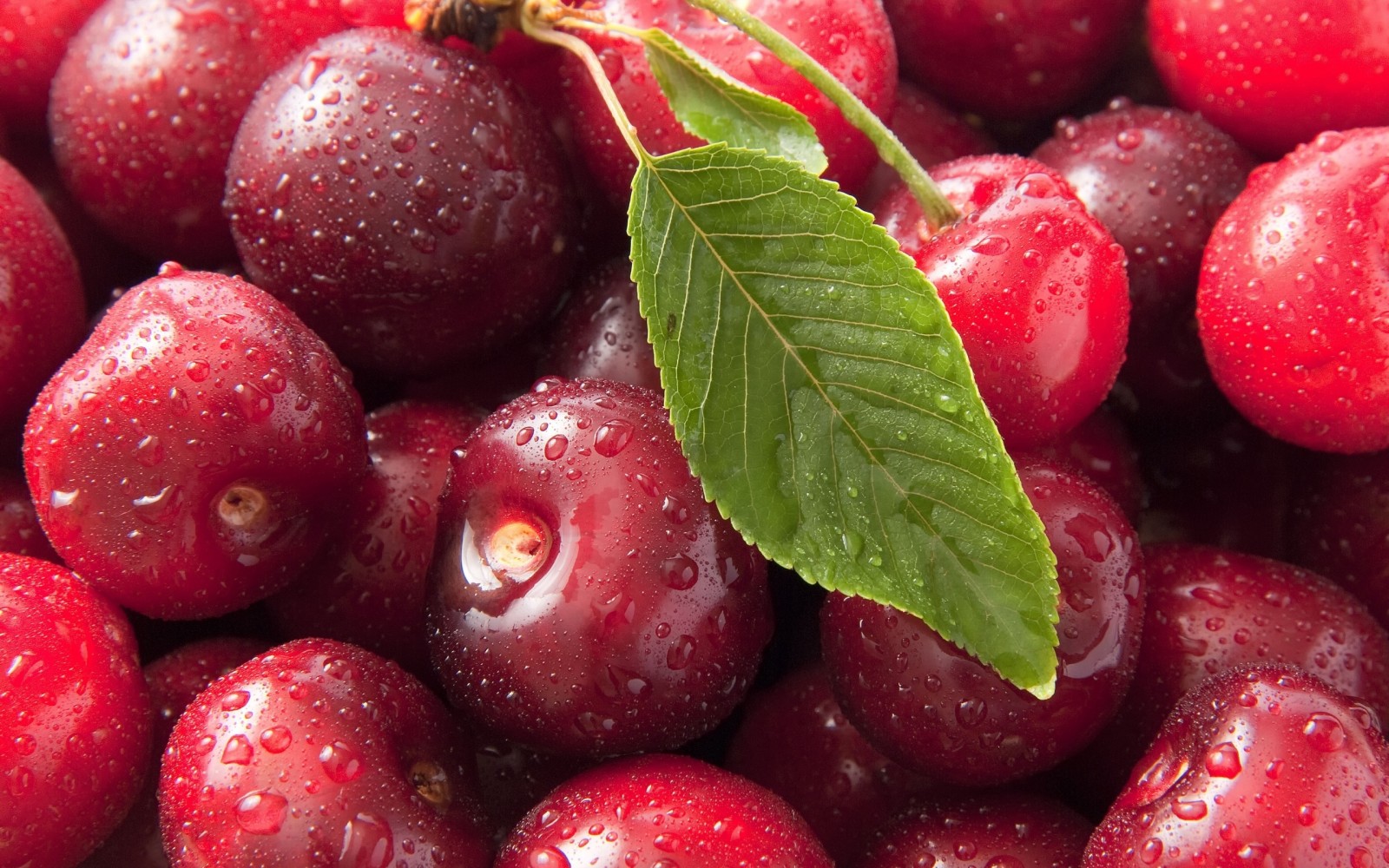Cherry is a berry culture known since ancient times. Its fruits are rich in vitamins, glucose and fructose, mineral salts and organic acids, have anti-radiation, tonic, antihypertensive properties. Cherry ranks third after apple and plum in terms of the number of trees in our gardens. And the cherry orchard bloom is just gorgeous. Along with traditional varieties, self-fertile varieties, which are characterized by regular and abundant fruiting, are gaining more and more popularity.
Content
Advantages and disadvantages of self-fertile cherries
Cherries can bloom and harvest every year. And if after the abundant flowering of trees you were left without berries, then this can be explained by one of the reasons:
- Pollination did not occur (cold or rainy weather, absence of bees prevented), pollen germinated poorly or was washed away by rain.
- Plants are not able to pollinate on their own (self-infertility of the variety), and there are no pollinating trees nearby.
These factors are less likely to affect the yield when planting self-fertile (self-pollinated) cherry varieties. This advantage is associated with the special structure of the flower: the stamens and pistil have the same height, so pollination occurs even before the flower opens. And also pollen is able to germinate for a long time - the percentage of germination is high even 20-25 days after pollen gets on the stigma of the pistil.
It is considered to be self-fertile varieties with fruit setting by 40-50% of flowers, self-fertile - by 5-6%, partially self-fertile - by 7-20%. When planted alongside pollinators, self-fertile cherries will yield higher yields.
However, the indicator of self-fertility is a variable value. In different climatic conditions, one and the same variety can produce completely different amounts of berries, and the yield can also vary in the same area over the years with different weather conditions.
To get high yields of cherries relatively consistently, you need to carefully study self-fertile varieties and choose the most suitable ones for your region.
Selection of varieties for regions with different climates
Cherry has been cultivated since time immemorial. It has been known in Russia since the 12th century. In the 15th century, cherries were already widespread everywhere up to Novgorod. In different regions there were also local self-fertile varieties, which were then preserved, studied and improved.
Cherry is a thermophilic and light-loving plant, but thanks to the efforts of breeders, it is possible to select zoned varieties that will grow and bear fruit perfectly in a particular region and climate.
Northwest Russia
The Northwest region of Russia is one of the most difficult for gardeners. Here it is necessary to grow frost-resistant varieties, tolerant of lack of heat and light, high humidity and frequent temperature changes.
Table: characteristics of self-fertile varieties for the North-West of Russia
| Variety | Ripening period | Plant characteristic | Characteristics of berries | Winter hardiness | Yield | Early maturity | Self-fertility |
| Amorel pink | very early |
|
| average | high | high | high |
| Crimson | medium early |
|
| above average | high, annual | not fast | partially self-fertile |
| Bulatnikovskaya | average ripening |
|
| average | high | begins to bear fruit in 3-4 years | high |
| Lyubskaya | late |
|
| increased | high | high, the first harvest the variety gives 2-3 years after planting | high |
| Bystrinka | average ripening |
|
| high | high | begins bearing fruit in the 4th year | partially self-fertile |
| Lotova | late |
|
| average | medium but regular | high | high |
Photo gallery: self-fertile cherry varieties for the Northwest region
- Crimson cherry has medium-sized fruits
- Bystrinka fruits are round, medium
- Cherry variety Lotovaya has large fruits of a blunt-spherical or barrel-shaped shape
- Amorel cherry has pink flat-round fruits with delicate skin
- Ripening of Bulatnikovskaya cherry fruits is extended in time
- Cherry fruits of the Lyubskaya variety are large and shiny
Cherry varieties for Siberia
Western Siberia is distinguished by the presence of a large number of swamps, frosty long winters and cold summers. In eastern Siberia, the climate is sharply continental with extremely cold winter months. For southern Siberia, frosty winters with heavy snowfalls and cool summers are typical. The climate of Siberia is harsh, but even for this region many zoned varieties of self-fertile cherry have been bred.
Table: characteristics of self-fertile varieties for Siberia
| Variety | Ripening period | Plant characteristic | Characteristics of berries | Winter hardiness | Yield | Early maturity | Self-fertility |
| Seedling Lyubskoy | very early |
|
| high | high | begins bearing fruit for 4 years | partial, but the variety is undemanding to pollinators |
| Shakirovskaya | medium early |
|
| above average | high | begins to bear fruit in 2-3 years | high |
| Generous | average ripening |
|
| good | high, annual | begins to bear fruit in 3-4 years | high |
| Lighthouse | average ripening |
|
| satisfactory | moderate | begins bearing fruit for 4 years | partial |
Photo gallery: self-fertile cherries for Siberia
- Cherry Lighthouse begins to bear fruit for 4 years
- Cherry Shakirovskaya rooted well with green cuttings
- Cherry variety Generous is pest resistant
Varieties for Ukraine
Cherry has always been cultivated in Ukraine. There are enough self-fertile cherry varieties for cultivation in this region.
Youth
Variety of medium late ripening, undersized, self-fertile, frost-resistant, with magnificent large dark-burgundy berries weighing up to 4.5 g. Fruits of dessert, sweet and sour taste, suitable for all types of processing. A very productive variety: 10–12 kg per tree, bears fruit annually. The disadvantages include the average resistance to fungal diseases (moniliosis and coccomycosis).
Chocolate girl
The tree is of medium height (2–2.5 m), with dark, almost black berries. Begins to bear fruit in 4–5 years. Fruit tasting score 4.6 points, weight 3 g, sweet and sour taste. The variety is fruitful, frost and drought resistant, but susceptible to coccomycosis and moniliosis.
Nordstar
A variety of American selection of a late ripening period, undersized, with a compact crown, resistant to diseases and frost. Begins to bear fruit 2-3 years after planting. Forms a harvest on 1–2–3 year old branches. Fruits are dark red, weighing 4-4.5 g, sweet and sour taste.
Varieties for Belarus
The climate of Belarus is also suitable for growing many varieties of self-fertile cherries.
Vianok
Self-fertile variety Vianok of medium ripening (fruiting in July), high-yielding, winter-hardy, moderately resistant to fungal diseases. The tree is vigorous, medium-sized dark red fruits (3.7 g), sweet and sour, tasting score 4.5 points.
Novodvorskaya
The Novodvorskaya variety is partially self-fertile, medium-sized, productive, winter-hardy. Fruits are dark red, medium size, average weight - 4.2 g, pleasant sweet and sour taste, tasting score - 4.7 points.
Video: useful tips for planting and growing cherries
Winter hardy varieties
Winter hardiness is a very important characteristic for self-fertile cherries, which you should always pay attention to.... Very often, these varieties are grown in small areas in a single copy. Self-fertile cherry varieties that have established themselves as winter-hardy:
- Nord Star;
- Lyubskaya;
- Annushka;
- Youth;
Self-fertile hybrids
Dukes (sweet cherries) are hybrids of cherry and sweet cherry, obtained by pollination of plants of the same family.From the parental species, they acquired resistance to low temperatures, to some fungal diseases (coccomycosis, moniliosis) and magnificent large and sweet fruits.
The name "Duke" comes from the cherry variety May Duke (Duke of May), the oldest and most popular cherry-cherry hybrid in the last century, which appeared in the 17th century in England. The first hybrid of the domestic cherry Krasa Severa was bred by I.V. Michurin in 1888.
Duques are unpretentious, it is much easier to grow them, so the culture is gaining popularity. The most popular varieties of cherry and cherry hybrids:
- Wonder cherry;
- Spartan woman;
- Night;
- Komsomolskaya;
- Torch;
- Rubinovka;
- Ivanovna;
- Hope;
- Spectacular.
Most cherry and sweet cherry hybrids require pollinators. Their yield without pollinators will be lower. Dukes should be planted surrounded by cherries and cherries of zoned varieties. It is preferable to choose cherries, the Iput variety is especially good. Dukes are fast-growing, and in the third year you can get the first harvest of berries.
Video: fruiting dukes
The self-fertile cherry variety is very important, especially for cultivation in difficult climates. The main thing is to make the right choice and in the future to enjoy not only the beauty of flowering cherry trees, but also the magnificent healthy fruits.
